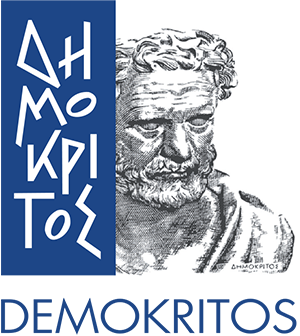Papadakis Dimitris

Dimitris Papadakisis a PhD student working under the framework of the European Consortium for the Development of Fusion Energy (EUROfusion), at the Fusion Technology Group (FTG) of the Institute of Nuclear and Radiological Sciences and Technology, Energy and Safety of NCSR "Demokritos", since 2019.
As part of his doctoral thesis entitled "Study of the effects of annealing to the mechanical and structural properties of neutron irradiated tungsten materials with applications in fusion technology", he investigates the effects of annealing on the mechanical, electrical and structural properties of tungsten materials irradiated with neutrons in a fission reactor. The correlation of these properties with the evolution of defects during annealing will contribute to the understanding of the underlying phenomena behind the physical processes of neutron irradiation and annealing, as well as assist in the technological development of plasma facing materials. For the above purposes, he utilizes methods such as Positron Annihilation Lifetime Spectroscopy, optical and scanning electron microscopy (SEM), and X-ray diffraction (XRD) for the study of the structural properties, as well as indentation, impulse excitation and DC resistivity for the study of mechanical and electrical properties of the materials.
In 2017, he received his BSc in Physics and in 2019 his MSc in Materials Physics from the Department of Physics of the National and Kapodistrian University of Athens (UoA). His PhD thesis will be defended at the Physics Department of UoA.
PhD Short Description
High temperatures as well as high fluxes of neutrons and other highly energetic particles during the operation of a magnetic confinement plasma device (Tokamak) make imperative the use of materials that are resistant to high temperatures and radiation. Tungsten is a candidate plasma facing material for the interior walls of a fusion reactor due to its high melting point, high thermal conductivity, low tritium retention and heat stress resistance. However, tungsten suffers from brittle behavior at low temperatures due to the relatively high ductile to brittle transition temperature, limiting its exploitation.
The objective of Dimitris Papadakis’ PhD is the study of the annealing effects of fission neutron irradiated tungsten materials.
Selected neutron irradiated tungsten materials will be annealed in the temperature range of 600 - 1500 °C with the aim of studying the restoration of the properties of tungsten to the pre-irradiated state. Neutron irradiation causes damage in a material, resulting in the creation of defects. With the use of Positron Annihilation Lifetime Spectroscopy the type and percentage of open volume defects will be determined. Additionally, optical and electron microscopy (SEM), as well as X-ray diffraction (XRD) will be used to determine the changes in the structure of the materials during annealing and irradiation.
Annealing at very high temperatures results in structural changes of the tungsten material through diffusion and the interaction of various defects in the crystalline lattice, or even through the mechanism of recrystallization. These structural changes lead into the change of the mechanical and electrical properties of the materials. Through various techniques of characterization of mechanical properties (Macro-Nano Indentation, Impulse Excitation) and electrical properties (DC Resistivity), structural changes will be correlated with changes in the physical properties of the material.
The PhD thesis will be defended at the Physics Department of UοA.

